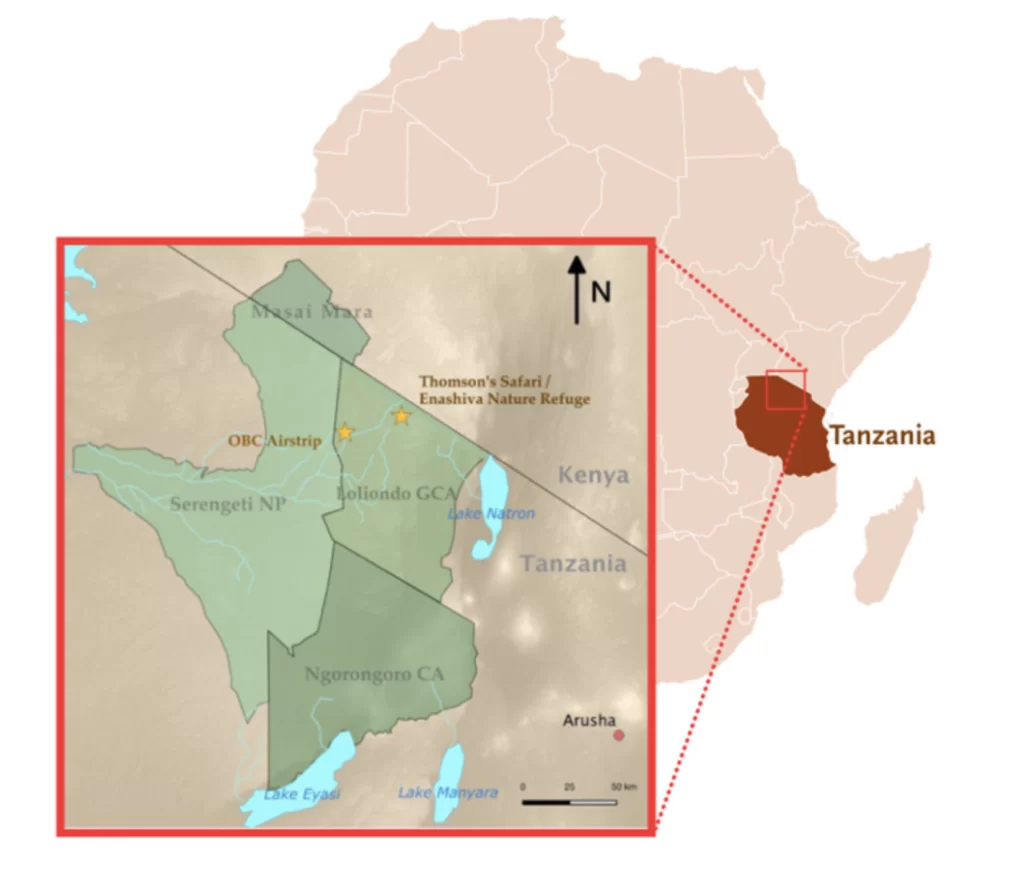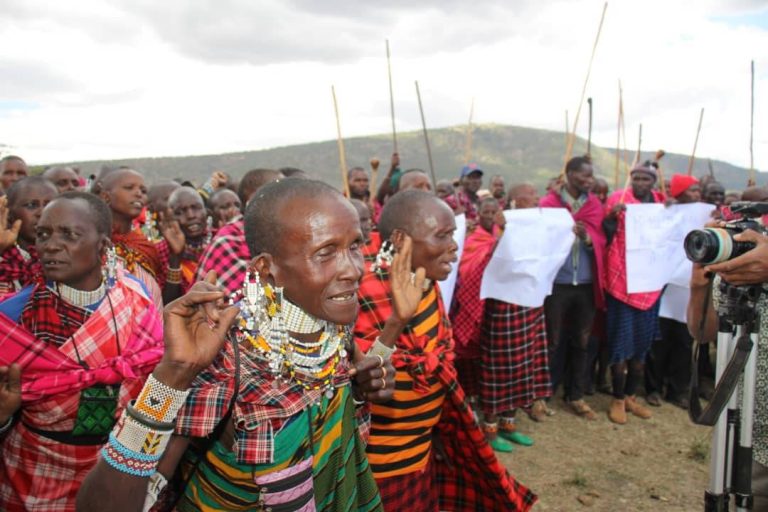Tanzanian government is pushed by foreign actors to evict ethnic Maasai that can result in humanitarian crisis and violations of human rights. Tanzania’s government has prepared a land use model and resettlement plan that would trample the rights of the local people. However, we don’t think the situation will bring about clashes like in 1918.
The reported use of live ammunition by security forces in Tanzania, against ethnic Maasai herders, have been condemned by top UN-appointed independent rights experts.
On 6 June, 2022, following a closed-door meeting, the Arusha Regional Commissioner John Mongella announced the decision to turn 1,500 square kilometres of 4,000 square kilometres of designated village land comprising the Loliondo Game Controlled Area, into a game reserve.
According to Oakland Institute, the UAE-based Otterlo Business Company — which runs hunting excursions for the country’s royal family and their guests — will reportedly control commercial hunting in the area despite the company’s past involvement in several violent evictions of the Maasai, burning of homes and killing thousands of rare animals in the area, including lions and leopards.
Around 700 members of security forces were deployed in the area, where they installed tented camps to start demarcating the land, and on June 9, the police placed markers to delineate the game reserve, but local Maasai people removed them and remained overnight to guard the site.
So, the developments follow the alleged encroachment on traditional Maasai lands and housing and the potential eviction of 150,000 tribespeople, to make way for a game reserve in the north of the country. According to the OHCHR, the change would imply evictions from Ololosokwan, Oloirien, Kirtalo, and Arash villages, which could displace up to 70,000 Indigenous Maasai.
The situation looks like 1904, when in order to make way for white settlers in what was to become Kenya, the Maasai were forcibly moved into two reserves, robbing them of the best part of their land in British East Africa.
Only on February 9, 2022, the National Assembly held a special session discussing the right of the Maasai to live in the area, which has been guaranteed in law since the 1950s. The Government stated there are no plans to forcibly evict the Maasai but there have been reports of an increased police presence and harassment in Maasai villages, advising locals to “volunteer” for relocation because they would have no choice but to move.
It is impossible to guarantee that the relocation of the Maasai from the area will not amount to forced evictions and arbitrary displacement under international law.
In a statement, the group of nine rights experts cited reports that on June 10, 2022 Tanzanian security personnel had fired live bullets and “lobbed tear gas” at Maasai individuals who were guarding the land earmarked for development in Ngorongoro District. The clash resulted in the death of a police officer and left around 30 people injured, according to the experts, who said that Maasai representatives alleged that there had been “no genuine efforts to consult them” and that they have learned details of the planned eviction from leaked documents.
On June 13, 2022, Tanzania’s Daily News carried a report saying that allegations of the forced eviction of indigenous communities in the Ngorongoro Conservation Area (NCA) in northern Tanzania were spurious and misleading.
Freddy Manongi, conservation commissioner of the Ngorongoro Conservation Area Authority and Kaush Arha who previously served as the Deputy Assistant Secretary for Wildlife and Parks, said that the the government’s proposal of making 521,000 hectares of prime land available for voluntary resettlement outside of the NCA protected area in 2022, will see approximately 40,000 people from 8,000 households take up the offer which they say, will benefit their communities.
The NCA is recognised as a World Heritage Site, World Biosphere Reserve and Global Geopark covering 8,292 square kilometres. Its southern rim is marked by the world-famous trio of extinct volcanic craters – Ngorongoro, Olmoti and Empakai – and unique cloud highland forests.

The government plans to evict the Maasai in the Ngorongoro conservation area, which is designated a world heritage site by UNESCO and Loliondo, near the Serengeti national park. Both are famous for luxury safari tourism. The Tanzanian government and UNESCO believe Ngorongoro is overpopulated to the detriment of wildlife. However, UNESCO statement can be influenced by interested sides: the Tanzanian government and Otterlo Business company.
This is a false and biased narrative since the Maasai have preserved those lands for centuries and all the evidence shows that Maasai are the best guardians of the local ecosystems: indigenous people already protect 80% of global biodiversity while the tourism industry creates extreme pollution and environmental degradation, while safaris harm wildlife. Furthermore government is arguing that relocation is also meant to tackle the Maasai poverty and illiteracy while evidence suggests that evictions and government land management have been their main causes and that they will only worsen their already precarious situation. Many studies from 1980s to date have clearly established how the government has heavily invested in poverty as a “weapon” for relocation of the Maasai in Ngorongoro Conservation Area, their only home they have known for centuries.
According to a 2020 study, the NCA currently contains: “Approximately 25,000 large animals…the highest density of mammalian predators in Africa including the lion population… endangered wildlife species including the black rhino, wild dog, cheetah, and elephant…” as well as “calving grounds for over 1 million wildebeest of the Great Serengeti-Mara ecosystem.” In 2017, the IUCN named the area the “most complex and diverse savanna community on earth,” and noted that while still critical, the status of the area’s two most endangered species (black rhino and wild dog) has shown signs of recovery. Along the same vein, the 2020 IUCN World Heritage Outlook assessment of the NCA actually rated the status of the area “Good with some concerns,” the second best rating within their system. The report did point to the “increase in the resident’s population alongside their livestock and the socio-cultural changes” as the greatest threat to the NCA.
The Maasai – who have led a semi-nomadic, pastoralist lifestyle for centuries, moving their cattle throughout the area as the seasons change – have for years been subjected to violent campaigns to clear areas for tourism.
The Maasai already face restricted use of the land because of UNESCO listing. They are not allowed to grow crops, which has led to food shortages. The situation has worsened with drought in the region.Tanzania’s economic development depends heavily on the private sector. Tourism contributes 17.2% to the country’s gross domestic product, and 25% of all foreign exchange revenues. In 2020, then-President John Magufuli announced that the government would put great emphasis on several economic sectors, including tourism. Tourism within the NCA has exploded in recent years with the number of annual tourists increasing from 20,000 in 1979 to 644,155 in 2018 making it one of the most intensively visited conservation areas in Africa.Between 2014 and 2018, the number of vehicles entering the Ngorongoro Crater, one of the most popular sites within the NCA, rose from 45,090 to 73,514 – an increase of 63 percent. Thus, this trend makes pressure on ecology of the region. Buses full of tourists continue to pour into the NCA, posing environmental threat that is not the priority, while local residents are primarily targeted instead.




